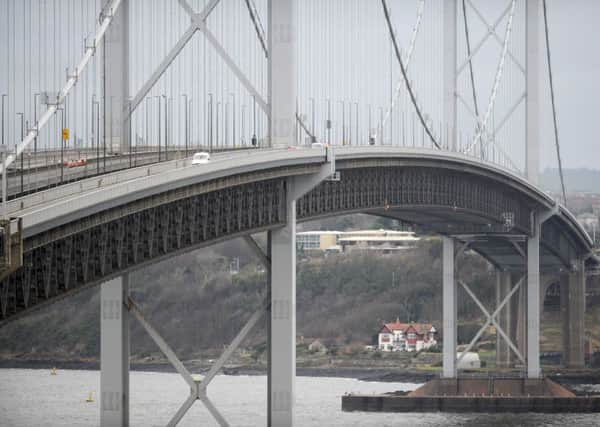Alastair Dalton: Perhaps we expected too much of Forth Road Bridge


Its shutdown last week came as the very sudden realisation of a nightmare scenario which ministers had hoped to avoid by ordering a new bridge that will cost us £1.3 billion.
The fear had been that corrosion of the bridge’s main cables would be found to be so bad that traffic restrictions – or even closure – would be required.
Advertisement
Hide AdAdvertisement
Hide AdBut that has proved to be just one of a string of symptoms of the 51-year-old crossing showing its age, or more crucially, the battering it has taken by carrying twice its design capacity – 24 million vehicles a year.
With the Queensferry Crossing on its way – and apparently still on schedule to open in a year’s time – other major repairs have also been postponed until the traffic is switched to the newcomer.
Expansion joints on the deck carrying the carriageways are life-expired and could fail at any time. But because of the cost and scale of disruption, along with the impending replacement bridge, the work was shelved.
Replacement of part of the truss, a framework of steelwork which supports the deck, was also scaled back for similar reasons, and more modest strengthening work was agreed instead.
It seems that yes, if the original scale of that work had gone ahead, it could have averted the current closure – but unknowingly. However, the crack which caused the current calamity was not known about at the time of the earlier work and apparently happened far more recently.
After the crack was discovered last week, there was a certain amount of chaos in the way the unfolding drama was communicated, especially when a lorry ban on the bridge was imposed without warning and with immediate effect.
However, since then, there seems to have been a genuine attempt at providing full information about the problem and what is being done to tackle the impact and limit the disruption.
But what is now developing looks like a witch hunt. It began with calls for an inquiry, then a more personal quest for a scapegoat: Whose fault was it? Why was it not fixed earlier?
Advertisement
Hide AdAdvertisement
Hide AdOpposition politicians appear to be deliberately deaf to exactly what transport minister Derek Mackay said in trying to explain the complicated situation. Tabloid headlines like “Bridge of Lies” added to the hyperbole.
But it looks like a no-win situation politically. SNP ministers may run the bridge now, but before June it was in the hands of an elected board dominated by Labour and Liberal Democrat councillors. It was they who took the decisions on what repairs to proceed with and what to change or postpone – after listening to advice from respected bridge officials and engineering consultants.
Having witnessed that while sitting through many such board meetings, I also got the clear impression that while the bridge had no independent funding after tolls were abolished in 2008, members would not have staved off any crucial repairs for want of funds.
They would have got straight onto the Scottish Government. Indeed, I recall the initial reaction of ministers to the main cable corrosion findings – they thought the bridge board was trying to use the results to bounce them into approving a new bridge.
So actually, maybe no one is to blame for the bridge’s latest problem. Perhaps we’ve simply let too many vehicles – especially heavy lorries – cross the bridge for decades. But equally, no one will be stepping forward to take the credit for that either.